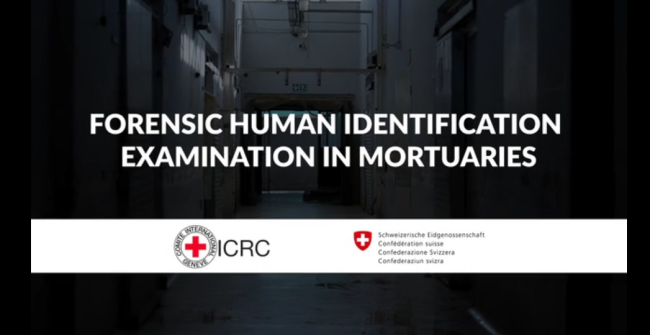Forensic Human Identification Examinations in Mortuaries

Forensic Human Identification Examination in Mortuaries is a training tool created to show why comprehensive examination of unidentified bodies is necessary.
Activities include observing, documenting, photographing, fingerprinting, conducting dental examinations, performing X-rays and collecting samples. The aim is to ensure that identification will be possible using a multidisciplinary approach in the future, regardless of the state or condition of the body. All unidentified human remains should undergo examination prior to their interim or final burial.
The training tool also addresses the importance of showing dignity and respect in the examination process, highlights the importance of engaging with families of missing persons to obtain the personal information needed for identification, and emphasizes the authorities’ responsibility to protect data and samples.
The training tool has been created to inform first- and secondary-response practitioners to follow a systematic approach. It is also aimed at students in law, health, forensic, policing and disaster management faculties; police, civil defense and military colleges; and staff and volunteers working for civil society organizations who participate in the recovery and management of the dead and need to understand the role and functions of the medicolegal system – a system which benefits from professional recovery efforts and death scene management, and is seriously compromised by poor practices.
The training video comprises 14 chapters that can be individually shown to meet training curricula and subject-matter instruction and discussions.
Please Note: The training tool shows forensic identification activities that are graphic in nature and may not be suitable for all viewers. The forensic procedures shown were carried out on cadavers; this is necessary in order to demonstrate the multidisciplinary approach of forensic identification to other forensic practitioners.

Long-term learning opportunities
Learn about education opportunities within the missing persons community.

